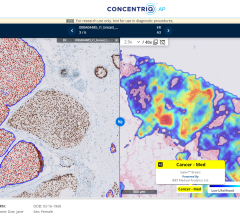
As we witness a mounting backlash against prior authorization in healthcare, we must explore more effective alternatives. Last month, the Centers for Medicare and Medicaid Services (CMS) took a step in the right direction by unveiling a rule to enhance and streamline this cumbersome process. CMS in its rule recognized the need for change, acknowledging prior authorization often hampers essential patient care due to convoluted payer requirements and protracted decision-making.¹
In addition to delaying needed care, prior authorization exacerbates medical provider burnout and drives up administrative costs for both providers and payers, prompting most state legislatures to also debate its overhaul.
According to a survey conducted by the American Medical Association (AMA), physicians dedicate the equivalent of two full business days each week to navigating prior authorization requests² — that diverts time they should be spending with patients.
Prior authorization’s economic burden disproportionately falls on physician practices. It wrestles medical decisions from those most qualified to make them. Consequently, this bureaucratic hurdle can lead to potentially life-threatening delays or denials of essential care, with 94% of physicians reporting such disruptions.³
Alternatives like Clinical Decision Support (CDS) systems offer a promising solution to prior authorization. In the field of radiology, the American College of Radiology’s long-standing appropriate use criteria (AUC) exemplifies how CDS systems for the optimization of use of advanced imaging services can provide a better alternative, fostering cost savings and improved patient outcomes.
This program empowers physicians and non-physician providers to make informed decisions regarding the appropriate use of imaging such as MRI, CT, PET and nuclear medicine scans while providing education to those providers on appropriate imaging use. Unlike prior authorization, the AUC/CDS program is transparent, evidence-based, can be implemented within electronic health records, and multi-specialty physician-led.
The adoption of CDS systems has demonstrated tangible benefits in peer reviewed literature, including reductions in inappropriate studies, more accurate diagnoses, reduced delays in accessing imaging, and enhanced health outcomes. Based on real-word examples, CMS estimates that leveraging AUC could potentially save the Medicare program a staggering $700 million annually — underscoring the fiscal prudence of such alternatives.⁴
Moreover, with the advent of artificial intelligence (AI), the potential for CDS systems to serve as an alternative to prior authorization is further amplified. Newer AI-based approaches promise to streamline the implementation of these solutions, curbing wasteful imaging practices while alleviating administrative burdens. By swiftly processing patient data from electronic health records and presenting clinicians with tailored recommendations based on the clinical condition, AI promises to enhance the efficiency of use of CDS systems.
ACR is committed to harnessing the full potential of AUC/CDS and other cutting-edge technologies to drive improved patient outcomes and enhance the healthcare ecosystem. To truly revolutionize the healthcare paradigm and achieve our collective goals, we must reimagine the payer-provider dynamic as a collaborative partnership — one that values the expertise and judgment of healthcare professionals in delivering appropriate, cost efficient and personalized high-quality care.
It is time to embrace innovative alternatives to prior authorization that prioritize patient well-being, provider autonomy and fiscal responsibility. By championing a collaborative approach grounded in evidence-based decision-making and technological innovation, we can pave the way for a healthcare system that delivers on its promise of accessibility, affordability and optimal health outcomes, not only in radiology, but across the healthcare system.
About the author:
William (Bill) T. Thorwarth Jr., MD, FACR, served in the role of Chief Executive Officer of the American College of Radiology (ACR) since 2014. In May 2023, he announced his intent to retire June 30, 2024, after 10 years leading the association. Prior to this, Thorwarth was involved with ACR at both a state and national level for many years where he helped develop ACR practices and standards, and chaired the Commission on Economics, amongst others notable achievements. During his tenure as CEO, Thorwarth was instrumental in driving the Radiology Health Equity Coalition, a program cofounded by the ACR to share resources and best practices, collaborate on programs and services to improve imaging access and utilization in underserved communities. He also guided the ACR through the COVID-19 pandemic — overseeing the organization’s response and taking part in research to prepare for future pandemics.
References:
3. www.ama-assn.org/practice-management/prior-authorization/advocacy-action-fixing-prior-authorization


 November 11, 2025
November 11, 2025 









